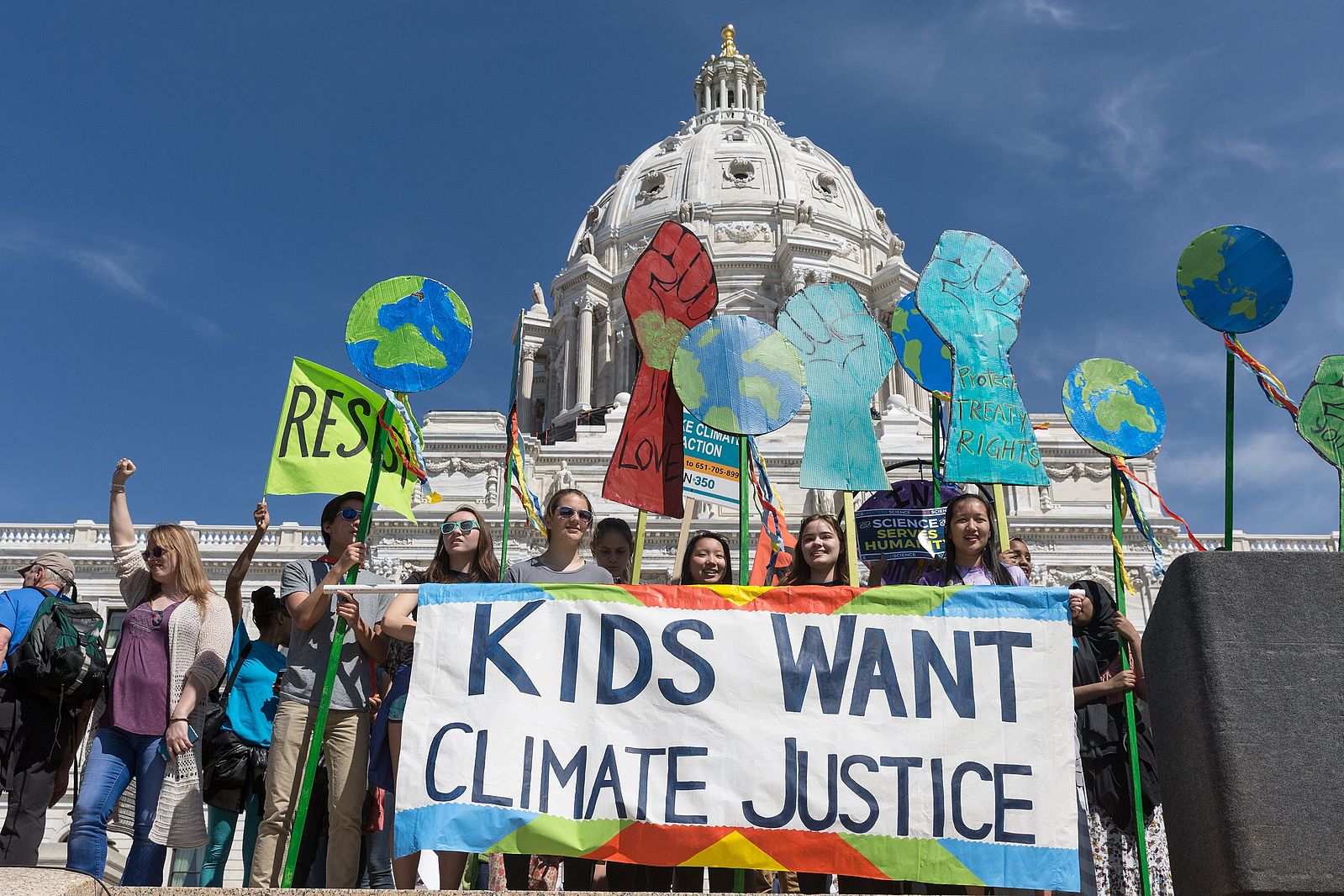Aoife Daly writes on Access to Justice for Children and Youth in the Climate Crisis
Children and youth have been driving activism and litigation to combat climate change. But how accessible is climate justice for them?

Access to Justice for Children and Youth in the Climate Crisis
The climate crisis is a human rights crisis, and it is children that will be worst affected. A 2022 IPCC report outlined that global heating has already guaranteed irreversible damage, and that an additional 1.7 billion people will be exposed to severe heat. Children and youth have been driving activism and litigation to combat climate change. But how accessible is climate justice for children?
The UN Convention on the Rights of the Child (CRC) 1989 is the most ratified human rights instrument and should drive efforts to ensure that justice is accessible for children. Justice proceedings should accommodate the distinct needs and vulnerabilities of children, so that they can participate meaningfully in the legal process. The Council of Europe outlines child friendly justice as: ‘accessible, age appropriate, speedy, diligent, adapted to and focused on the needs and rights of the child’. Yet children generally struggle to access justice, for example in many countries those under 18 years must approach the courts through a litigation guardian. The ability to invoke CRC rights is also crucial for children, yet in 2016 less than half of all countries allowed the CRC to be directly enforced in courts.
Aliozi refers to climate justice as a ‘flexible umbrella’ which can be understood to mean using law and human rights to tackle the climate crisis. I will focus here only on litigation, though it is part of a much broader picture of youth climate activism in protest, policy, and numerous other arenas. Litigation is crucial in a global context where children are excluded from law and policy development. In only 34% of 103 countries with new or revised climate plans were those plans classed by UNICEF in 2021 as ‘child sensitive’ and in only 12% were children actually consulted. This is a failure to uphold their CRC Article 12 right to be heard.
There is an urgent need to research child-friendly justice in the climate crisis, not least because there has been a proliferation of climate-related applications by children including successes in Columbia, France, and Germany. There have also been disappointments however, in the US (Juliana) and Australia (Sharma and others v Minister for the Environment) litigants continue their efforts through appeals. Children and youth took a petition to the UN Committee on the Rights of the Child (Saatchi) in 2019 under the Optional Protocol to the Convention on the rights of the Child on a Complaints Procedure (OPIC), targeting the five largest carbon emitter signatories. The application was deemed inadmissible in 2021 by the Committee due to the failure of the applicants to exhaust domestic remedies, so did not proceed to be heard on its merits.
The latter petition is part of what Parker et al. have identified as a trend in youth climate cases whereby applications are dismissed at a procedural stage due to a lack of justiciability or standing (they also note several domestic examples such as PUSH Sweden, Nature and Youth Sweden and Others v. Government of Sweden).
The Committee’s admissibility decision in Saatchi included some groundbreaking points – the recognition for example in principle of transboundary responsibility for human rights violations. However the determination that the applicants had to first exhaust domestic remedies in relation to each state party dealt a blow for children’s climate justice. The Committee could have applied the exception clause to the principle of exhaustion of domestic remedies under Article 7 (e) of OPIC where domestic litigation is ‘unlikely to bring effective relief’. In some countries (e.g. France and Germany) this may have been difficult to justify, yet in the case of Turkey, Çali points out that, ‘there is no domestic case law precedent that would allow these children to have any prospect of success to have the merits of their arguments to be assessed by Turkish Courts…’
This highlights a significant access problem, where children will fail to have their cases at international level proceed to a full examination without first engaging in what Wewerinke-Singh describes as: ‘largely untested, highly complex and expensive’ litigation strategies. Some of the Saatchi applicants may have fewer than 15 years before they lose their homes to climate change, indicating the urgency of the situation. Justice process are certainly not proving ‘speedy’ (note the Council of Europe guidelines above), and the requirement to exhaust domestic remedies appears, in reality, to render access to justice ineffective.
In 2020 six youths submitted a petition to the European Court of Human Rights (Duarte) arguing that the inadequate climate policies of 33 European states violate their human rights, including their right to freedom from discrimination, as children/youth will disproportionately suffer in the climate crisis. It is quite likely that their application will likewise fail to proceed to be heard on its merits, on the ground of failure to exhaust domestic remedies.
Judging is not a totally objective and neutral activity; rather it requires those involved to exercise discretion to at least some degree. In the context of the climate crisis, those with power have a responsibility to children/youth who are traditionally excluded from politics and law processes. The very least that could be done is to allow children’s petitions to be heard on their merits where it is justifiable to do so.
(This blogpost is based on the forthcoming article ‘Child and youth-friendly justice for the climate crisis: Relying on the UN Convention on the Rights of the Child’, under review by the Journal of Human Rights and the Environment. Pre-publication is available here. This research is funded by the Ragnar Söderberg Foundation.)